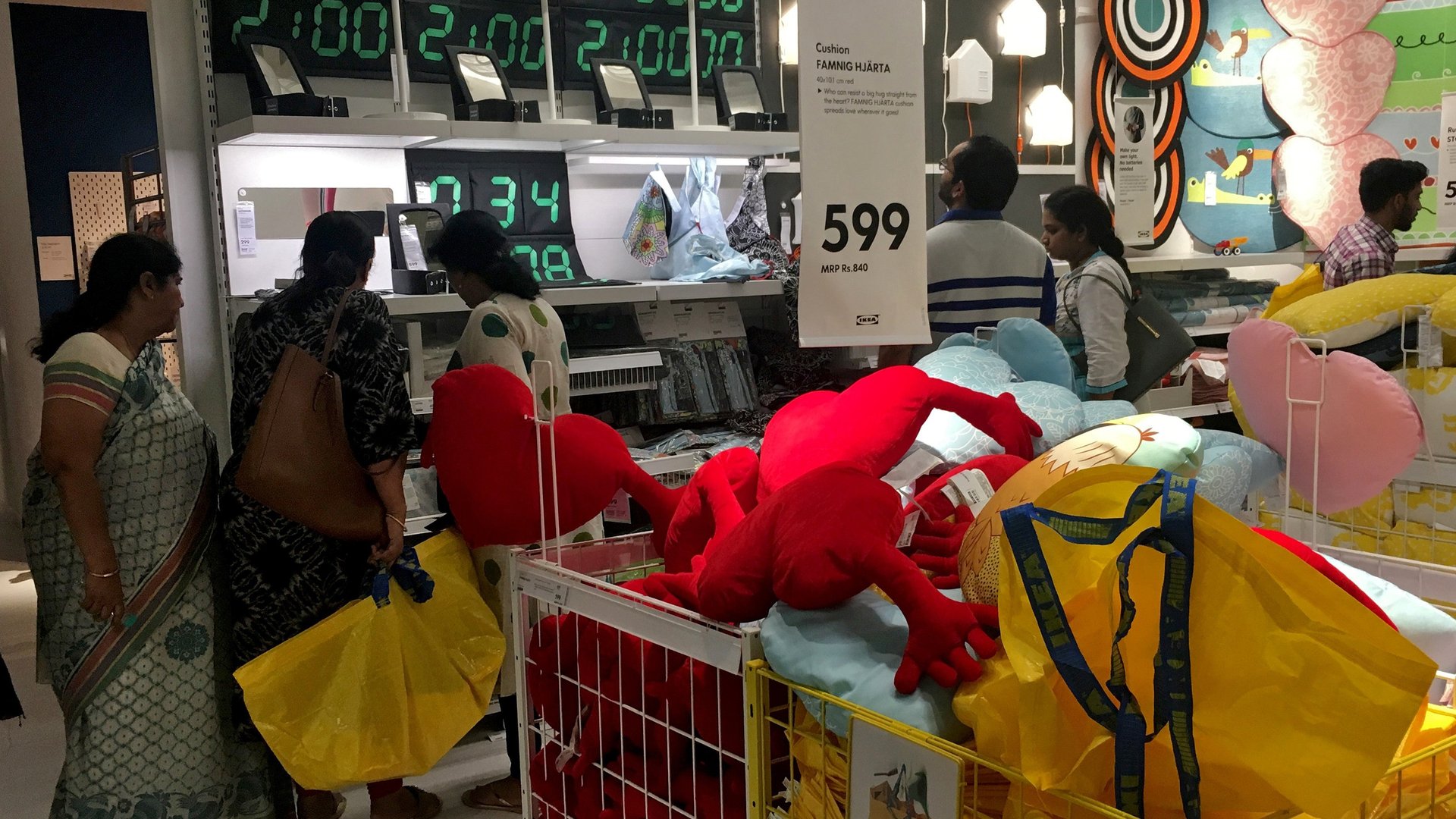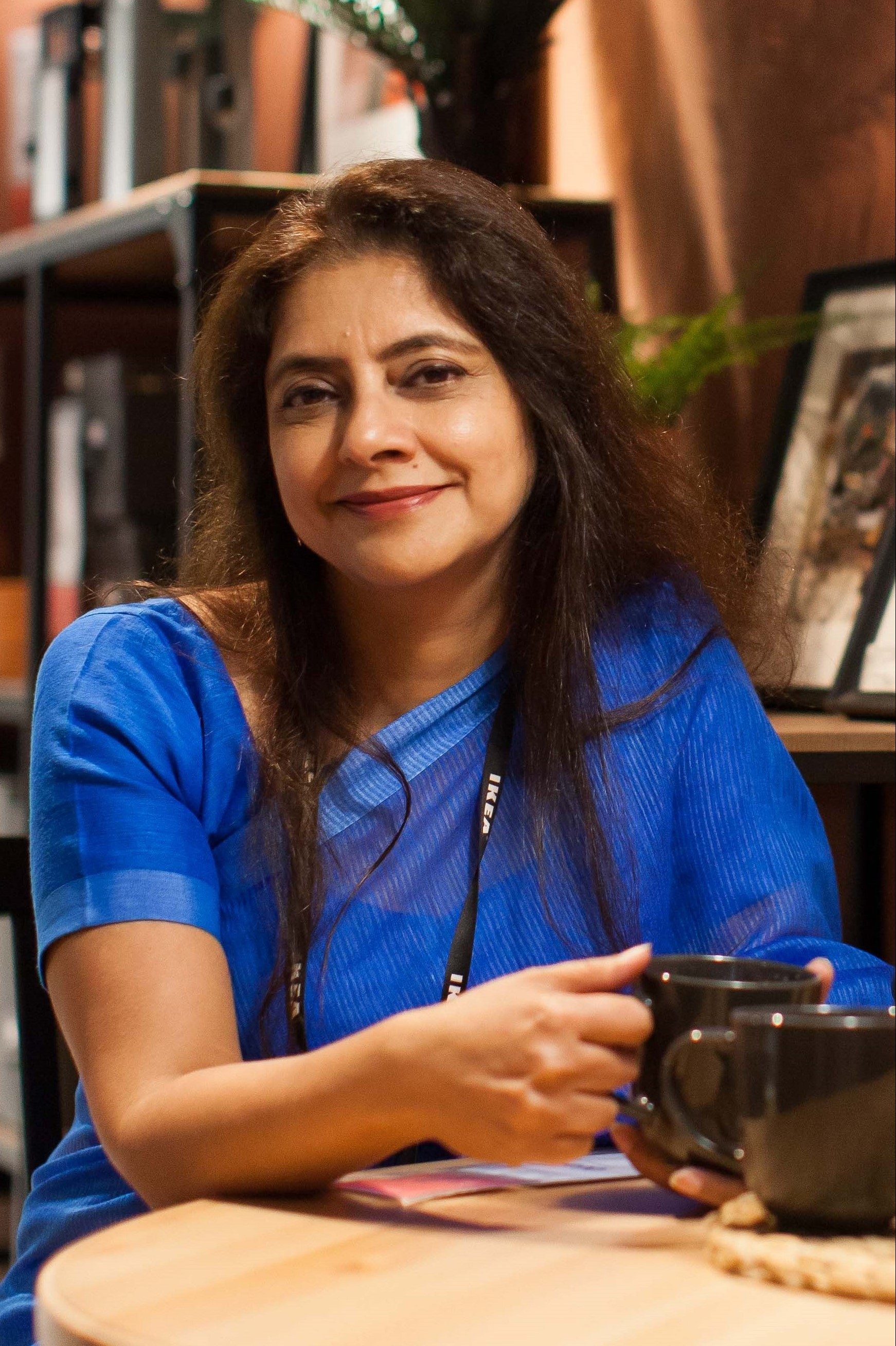One year and 4 million visitors later, IKEA can’t get enough of India
When IKEA unveiled its Indian store in Hyderabad on Aug. 9, 2018, the southern Indian city gave it a roaring welcome. In the first week of its launch, the Swedish furniture giant saw an average of 28,000 visitors per day. On some days during the first week, there were two-hour-long queues just to enter the store, and long winding traffic jams outside.


When IKEA unveiled its Indian store in Hyderabad on Aug. 9, 2018, the southern Indian city gave it a roaring welcome. In the first week of its launch, the Swedish furniture giant saw an average of 28,000 visitors per day. On some days during the first week, there were two-hour-long queues just to enter the store, and long winding traffic jams outside.
It was so chaotic that the company almost dissuaded shoppers by sometimes using a live ticker showing the estimated waiting time to enter.
A year on, 4 million shoppers have visited IKEA’s Hyderabad store, according to the company.
Enthused by the response, IKEA is now all geared up to launch in Mumbai, Delhi, and Bengaluru, having picked up a few lessons through its first year. For instance, the Swedish furniture giant is shifting its strategy by opening smaller stores and debuting online.
Quartz spoke to Preet Dhupar, chief financial officer of IKEA Group India, about these plans and those for its second year in the country. Edited excerpts:
How has IKEA’s Hyderabad store performed in the first year?
The store’s performance has been in line with our expectations. Be it metrics like the number of visitors or conversions at the store in terms of visitors making a purchase, the numbers have been encouraging and as per our expectations. We had 4 million visitors so far.
Are you on track with your planned investments in the country?
We began our India journey five years ago. We earmarked investment worth Rs10,500 crore ($1,447 million). This money has gone into buying land and setting up our store and supply chain.
Is Mumbai your next stop?
We are very much focused on the physical expansion of our stores in Hyderabad, Mumbai, and other markets. We will be in Mumbai very soon. This will be followed by the launch of small-format stores in Bengaluru and Delhi. Within the next two years, we will be present in the top four cities.
Could you tell us more about the smaller stores?
The city centre stores will have the same look and feel as any other IKEA store. It’s the size of the store, the range on display, and the presentation that will be different. Again, the food area will be smaller.
Tell us more about your e-commerce plans.
We are going to start a little small online. Mumbai will be the first city to go online. Being online gives us an opportunity to reach out to almost any city as it does not entail setting-up physical stores and related infrastructure.

As you enter new cities, will you change pricing?
We don’t segment our target audience on the basis of pricing. IKEA welcomes everyone into its stores as there is something for everybody.
Affordability is the key theme that runs across our range. A small house, too, can afford an IKEA kitchen. More affluent consumers will go for a different kind of IKEA kitchen.
In many other countries, buyers are comfortable with assembling their own furniture. Has India made any progress on this count with IKEA’s presence?
It’s a combination. There are customers who are willing to assemble the furniture by themselves and those who aren’t. We value and cater to both sets of customers. We offer assistance through our partner, UrbanClap, which helps assemble furniture.
What policy support you expect from the government?
The government has been very supportive and willing to listen. A few years back, big-box retail did not exist in the country.
Still, there are few things the government can do to provide a boost. We don’t have a retail policy because we are clubbed with other industries. The policies per se are not designed for retail as a standalone sector. Retail needs to be given an independent industry status.
To invite large investments in retail, the government has to think about how it can extend incentives to the industry, encourage setting-up of manufacturing facilities. From a policy perspective, it has to realise that retail is providing as much growth and employment as any other sector.
The government also needs to help with the easy availability of land parcels with their titles in the cities. Other key focus areas are helping with local sourcing and making modern production technology available.
What will you say has been IKEA’s contribution to the Indian retail market?
Worldwide, IKEA is known for innovation. Wherever we go, we help the home-furnishing segment grow. The brand does not just talk about sustainable homes, we make it a reality through our affordable products.